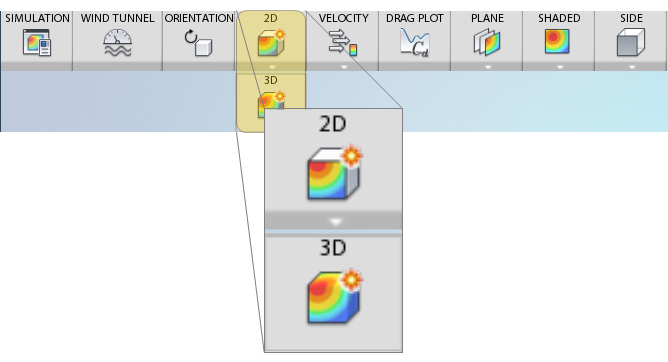
Results computed in 2D mode occur only in the selected plane. Use 2D for conceptual level "what if" simulations. Note that 2D does not produce a complete view of the flow. Results computed in 3D mode are more complete. 3D encompasses the entire object and the air throughout the wind tunnel. 3D allows the air to move in any direction that it would physically. Use 3D to evaluate the true aerodynamics of your model.
2D
2D runs the fastest by computing results on a two-dimensional slice through the model. Use it to quickly understand the aerodynamic behavior through a specific cross-section.
Flow in 2D mode, however, cannot move out of the plane to pass around an obstruction. It must "bunch" up because it is constrained to the plane. In this example, as the air hits the airplane tail, it turns upward flow past it. In reality, we know that some of the air would also flow past the sides of the tail:

In most cases, this is not a physical representation of the flow, so the results might not be as accurate as in a 3D simulation. Does this mean that 2D results have no value? Not at all. Because 2D simulations solve quicker than 3D, they provide a valuable concept view of the flow. The 2D mode is a powerful way to conduct multiple "what if" scenarios early in the design process. As the design evolves, however, it is wise to verify the flow behavior with a 3D simulation.
3D
3D is a more rigorous way to simulate flow aerodynamics. It is useful for visualizing the interactions between the flow and the model. Results computed in 3D are more complete than in 2D because they encompass the entire object and the air throughout the wind tunnel. When moving air encounters an obstruction, it can pass over, to the side, or under, as it would physically.
In the following, most of the air flows past the sides of the tail, so very little is forced to flow over it:
